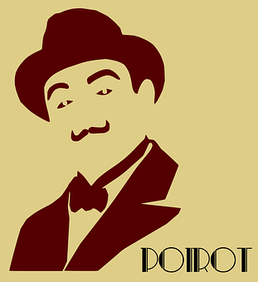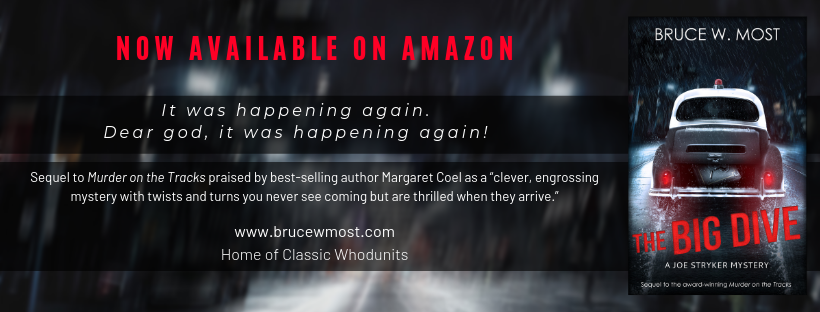|
You may have noticed on my website’s home page and my blog page I use the phrase Classic Whodunits. What does that mean? How do whodunits differ from other types of crime stories? Spy novels? Thrillers and suspense?  When people learn I write murder mysteries, some say they love to read mysteries, and proceed to rattle off names of writers who don’t actually write true whodunits. They write thrillers, spy novels, suspense, or other crime stories. So what exactly are murder mysteries and how do they differ from other forms of crime fiction? Crime fiction is, as you would expect, any story in which a crime and a criminal are central to the story. Fyodor Dostoevsky’s Crime and Punishment is a crime novel. It’s much more, of course. But a crime is at the heart of the story. Some popular mainstream novels also incorporate crime. Where the Crawdads Sing, which has been on the bestseller list FOREVER, has an unexplained death (possibly murder). But in this case, the death is not the central element of the story. Calling it a crime novel is a stretch. Under the umbrella of crime fiction huddle a host of subcategories:
Then there are thrillers and suspense novels, which readers (and even writers) lump in with traditional mysteries. It doesn’t help that Amazon makes the same mistake by placing mysteries, thrillers, and suspense novels into a single category. But thrillers and suspense are very different animals from mysteries Thrillers are all about action: think The DaVinci Code. Usually the protagonist is chasing or being chased by the villain while trying to stop a nefarious plot, almost always against the clock. In suspense, it’s typically the protagonist trying to escape a villain, either physically (Misery by Stephen King) or psychologically (Rebecca by Daphne du Maurier). Of course, these subcategories often mush together, borrowing from each other. Apprehension over what is going to happen next (suspense), the action of thrillers, mysteries within thrillers, and so on make it difficult to cleanly “label” the various forms of crime novels. The Mystery of Mysteries So what makes murder mysteries and my “classic whodunits” differerent from the other crime fiction categories? A murder mystery generally looks back to a death, rather than trying to prevent or avoid death common in thrillers and suspense. A murder, or multiple murders, occur and the sleuth (professional or amateur) attempts to figure out whodunit. They tend to be more cerebral and less violent, with the sleuth divining clues no one else can (à la Sherlock Holmes). You can work in action. The Big Dive and my cattle rustling mystery Rope Burn contain action and thriller elements. But at heart, they’re whodunits. I call my books classic whodunits because they harken back to the Golden Age of detective fiction from the 1920s into the 1940s: Agatha Christie, Ellery Queen, Erle Stanley Gardner, and many others. These novels carried certain tropes: One or more baffling murders (the opening of The Big Dive), the brilliant, determined sleuth, a bevy of suspects, clues and red herrings, motives galore, and justice achieved through the identification of the killer (though not always his or her imprisonment or death). Essential to this form of crime fiction is playing fair: the clues should all be there for the reader to solve the crime along with the sleuth (though we mystery writers try to make the killer and the sleuth outwit the reader). My mysteries use these tropes, but like many true mysteries, draw from more modern crime fiction tropes: action, thriller elements, suspense, sometimes a ticking clock. And the most important difference is that most of today’s sleuths struggle with their own wounded souls in one form or another, something rarely done in the Golden Age. There are countless riffs on murder mysteries, but for me these are the central components of a well-crafted whodunit. One last note. Murder mysteries embrace numerous subgenres, with settings that can be historical (The Alienist), in space (Isaac Asimov’s Robot series), or the dark streets of New York:
Who are your favorite mystery writers (besides me, of course)?
3 Comments
Eileen Parker
11/13/2019 04:53:24 pm
C J Box, Margaret Coel, .... so many good writers and good books!
Reply
Bruce W. Most
11/14/2019 02:10:24 pm
Yes, so many. Michael Connelly and James Lee Burke, plus several of my writer colleagues.
Reply
Leave a Reply. |
Bruce Most is an award-winning mystery novelist and short-story writer. His latest novel, The Big Dive, is the sequel to the award-winning Murder on the Tracks, which features a street cop seeking redemption while investigating a string of murders in 1949 Denver. His award-winning Rope Burn involves cattle rustling and murder in contemporary Wyoming ranch country. Bonded for Murder and Missing Bonds features feisty Denver bail bondswoman, Ruby Dark. Archives
February 2022
Categories |

 RSS Feed
RSS Feed